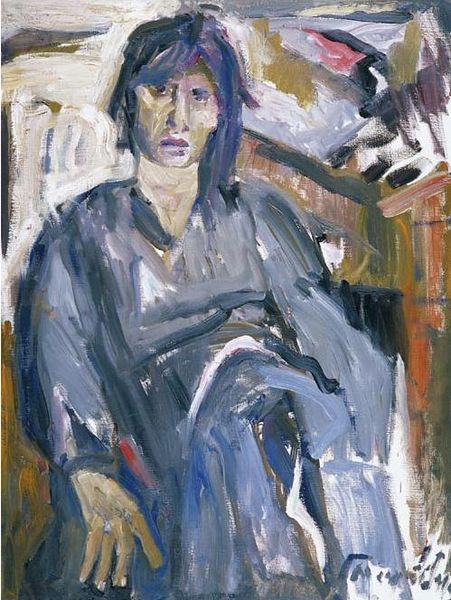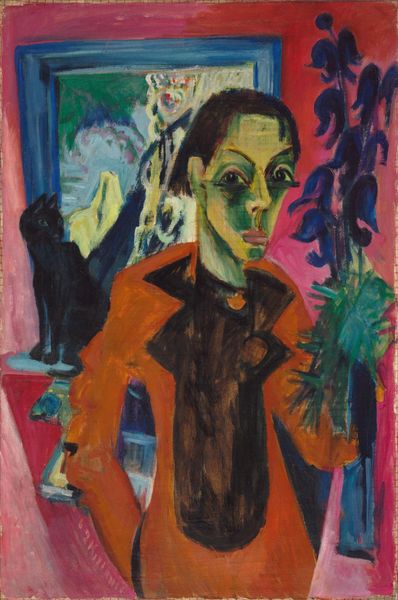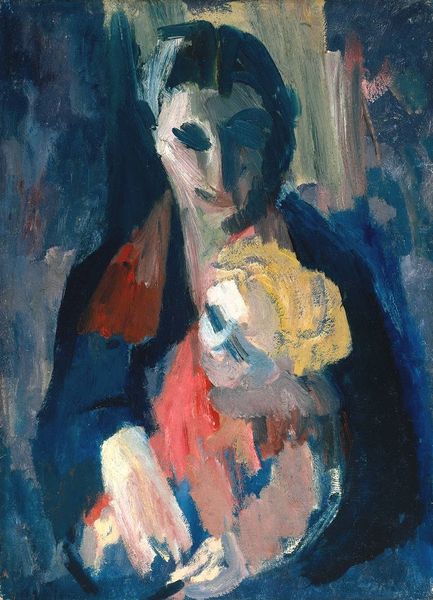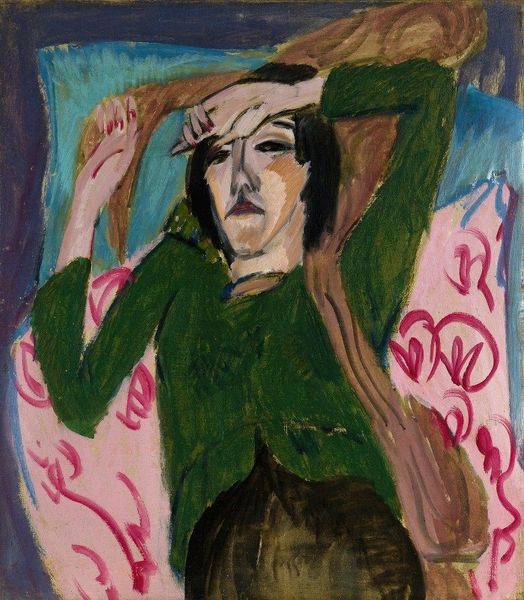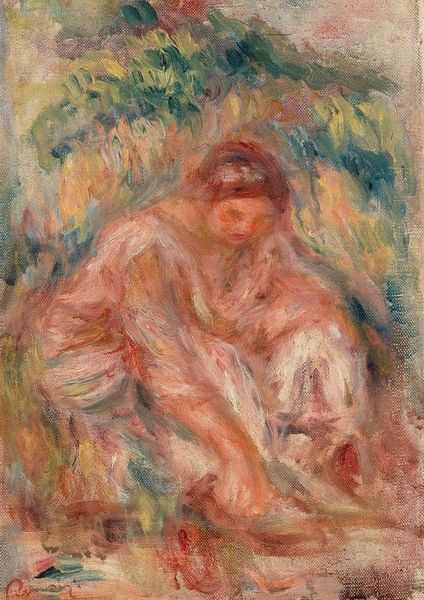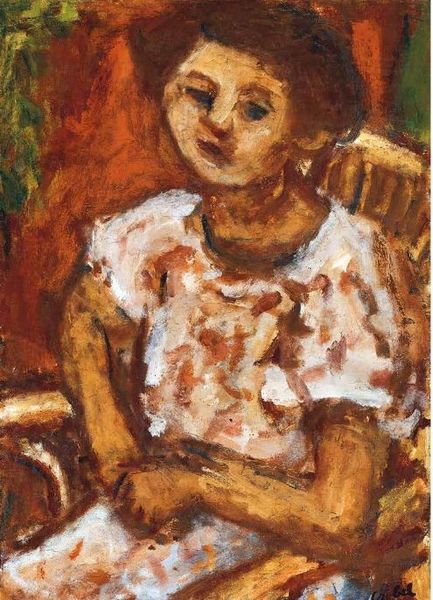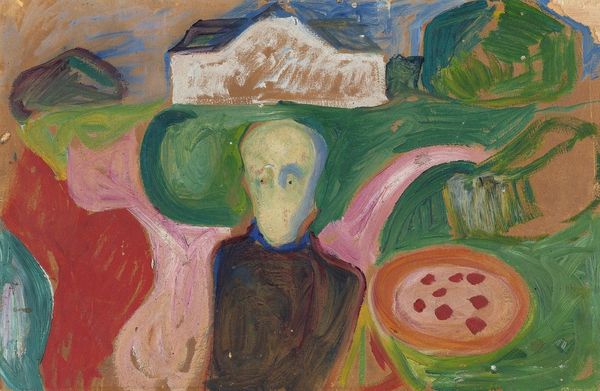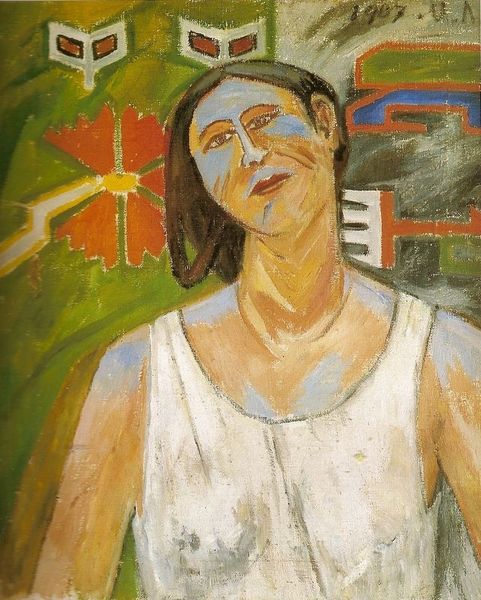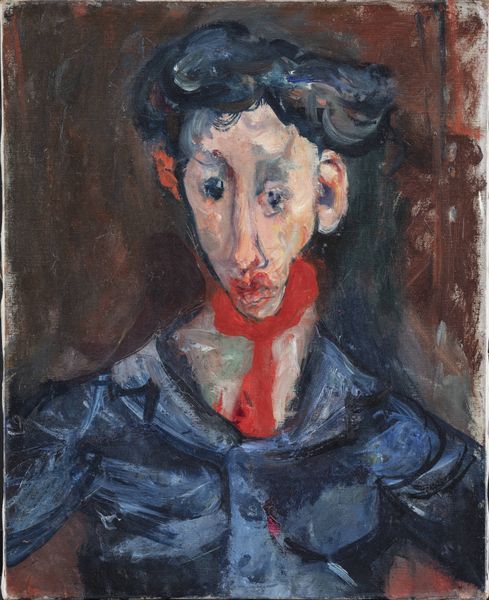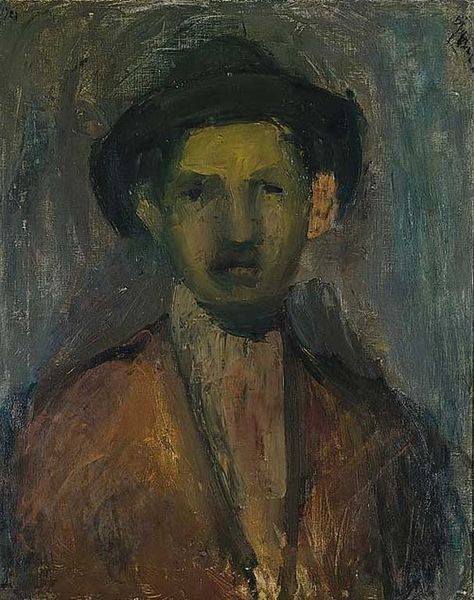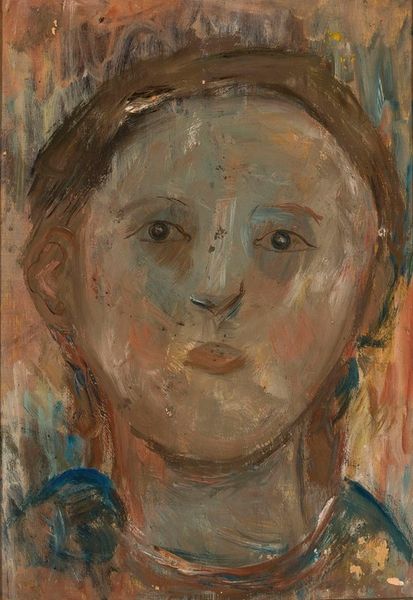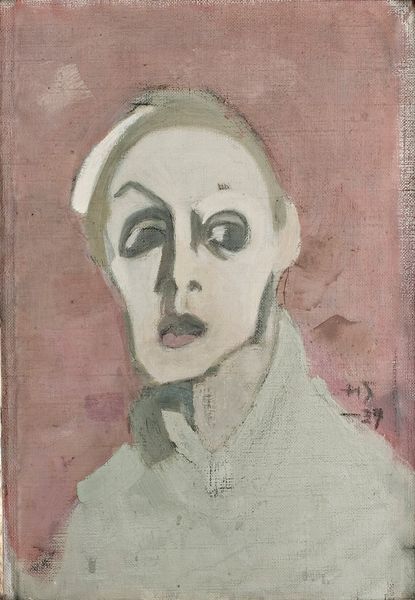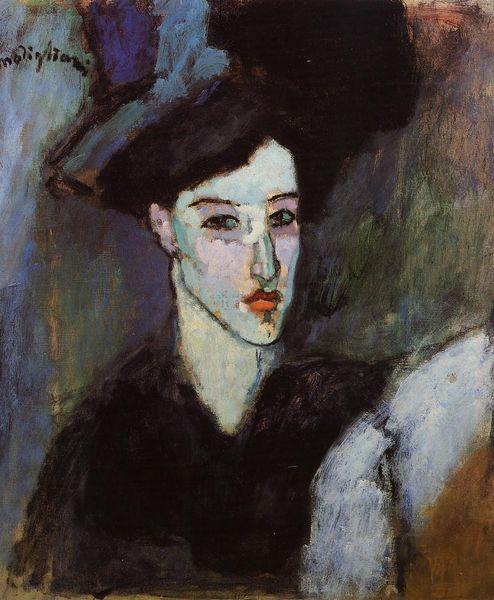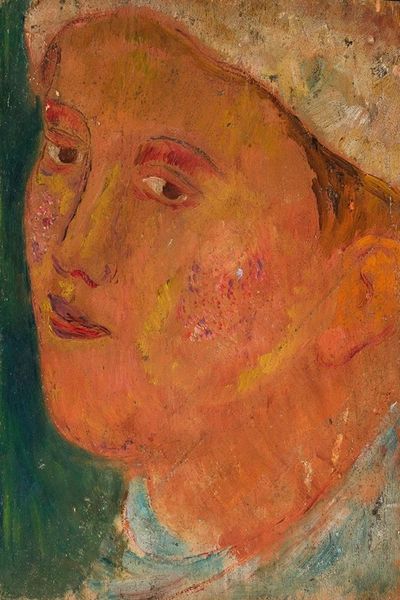
painting, oil-paint
#
portrait
#
painting
#
oil-paint
#
figuration
#
oil painting
#
expressionism
#
genre-painting
#
modernism
Dimensions: overall: 64.5 x 48.3 cm (25 3/8 x 19 in.) framed: 90.1 x 74.3 x 9.5 cm (35 1/2 x 29 1/4 x 3 3/4 in.)
Copyright: National Gallery of Art: CC0 1.0
Curator: Immediately, I'm struck by the visceral nature of this painting—it feels so raw and unsettling. Editor: And that intensity is quintessential Soutine. We're looking at "Pastry Chef," dating from around 1923. It's an oil on canvas. Soutine explored themes of isolation and alienation through his distinctive expressionistic style, often portraying figures on the margins of society. Curator: The chef's gaze is so direct, almost accusatory, yet his features are softened, even blurred by the expressive brushstrokes. What is he looking at? Is there an allusion to work here? What is he actually presenting to the audience? His facial features certainly invoke conflicting reactions of attraction and repulsion. The image clearly speaks to the emotional cost and value associated with food provision, historically speaking. Editor: Soutine frequently chose subjects like cooks and servants precisely because they existed outside the societal mainstream. By elevating them to the status of portraiture, he challenges the power dynamics embedded within representation itself. Moreover, food service work is often performed by workers who, themselves, may be structurally marginalized by race, class, or gender. Curator: It's as though the artist has captured not just a physical likeness, but also the chef’s essence—his humanity laid bare, vulnerable, and yet oddly dignified, especially if we analyze his uniform and bearing from a sartorial and symbolic vantage. But beyond that, the distorted features, the intense colours, it all points towards the psychological weight carried by this individual. Food for thought, indeed. Editor: And there's something decidedly political in that act of representing those often ignored or looked down upon. Soutine asks us to reconsider our own prejudices and preconceptions about labor, class, and even what we deem worthy of artistic attention. It’s about using art as a form of recognition, of granting visibility to those who are often rendered invisible. What’s so striking about his choice of profession here is it represents the most human, daily routine—cooking—elevating it to this very interesting conversation. Curator: Absolutely, it prompts us to question what values we've collectively internalized and challenges the structures we take for granted. Thank you for highlighting that! Editor: Indeed. By making us uncomfortable, Soutine compels us to see, and, hopefully, to act differently. Thank you.
Comments
No comments
Be the first to comment and join the conversation on the ultimate creative platform.
